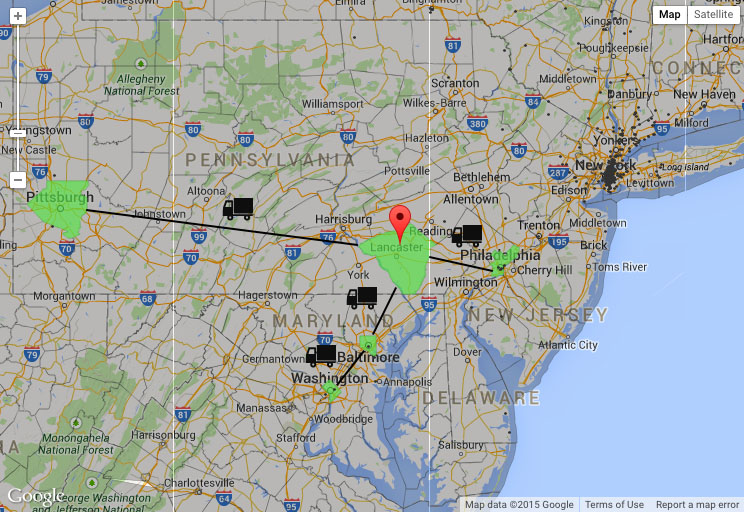20 feb 2015
Guest post by Jennifer Goggin, co-founder and CEO, FarmersWeb. The views expressed here are solely those of the author and do not reflect the views of Food+Tech Connect.
It is widely accepted that eating fresh, local foods is healthier and more nutritious. Smaller farms are generally more responsible with methods of production and when these products move through a shorter supply chain, it is easier to track them for food safety purposes—not to mention that the food maintains its freshness and retains vital nutrients. The question is: how can we move food more directly from local farms to the end consumer, chefs and retail stores to ensure that a greater number of people have access to these fresh, healthy products?
The biggest obstacle is a lack of infrastructure through which food can quickly and efficiently be distributed. Most of us already know this, and many have written about it here before. But rather than building expensive new infrastructure, the answer lies in more efficient use of trucks already on the road, barns with storage or cross-docking capabilities, and sales platforms that are already designed to bring seller and buyer together. We need to bring the Uber and Airbnb models to the food distribution industry. The real power of these technology platforms is that they provide a way for people to access resources that others already have, while letting the owners of those resources find customers that they wouldn’t otherwise be able to access.
For local food, the most common response to the distribution question is to build new food hubs. But physical food hubs require warehouses and warehouse staff, fleets of trucks and delivery teams, robust sales teams, and good software to keep everything organized. This requires intensive time and capital to start up, and profit margins in the food business are so low that these food hubs need to achieve serious scale fast just keep the lights on.
Rather than building from scratch, we need to bring together the pieces that already work to create one synergetic system. Farms already have room in their barns for storage or cross-docking, and online marketplaces like FarmersWeb allow sellers and buyers to find each other and do business. The missing link here is the trucks and delivery teams that deliver the goods from seller to buyer. Like Uber’s on-demand transportation model, this missing link could come from an online logistics platform that would allow farms to utilize existing transportation for their products—via a neighboring farm that is already making their own deliveries but has extra room their truck, or a broadline distributor already passing along that route with space for a pallet, or even an entrepreneur with his own truck and some spare time to make deliveries for local farms within his region. A powerful and widely-used technology platform is key to making this vision a reality.
FarmersWeb is currently experimenting with this type of model with The Fresh Connection and other logistics providers, whereby farms can sync up their orders with routes that these providers have made available. However, to truly build a synergetic food system, this cannot exist only in isolated communities. There should be thousands of The Fresh Connections across the country, and national distribution companies should look at empty space on their trucks as a commodity available for purchase. This is a win-win-win for everyone. Would-be logistics entrepreneurs can open up businesses with a ready set of customers, current distributors can make additional revenue, and local farms can afford to make direct sales with higher profit margins. With technology paving the way, the local food system can truly bring healthier, safer food to everyone.

No comments:
Post a Comment